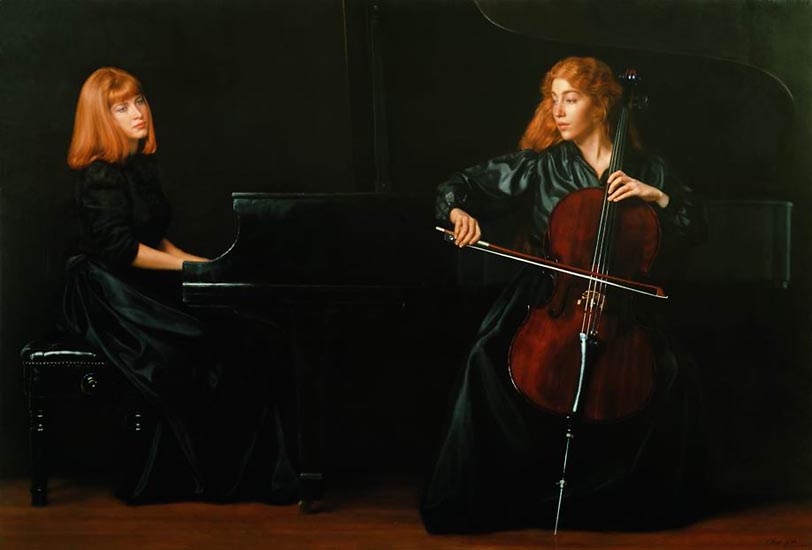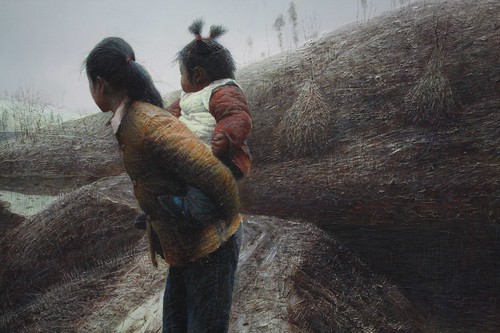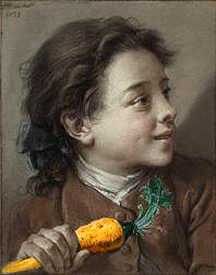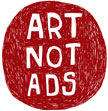2.03.2009
Yesterday my colleagues and I took a little field trip down to one of my favorite galleries in Shanghai to catch up on contemporary Chinese art as part of our Professional Development days. The HWA'S Gallery always has some of the most interesting contemporary art in Shanghai.
We were given a tour by David, the manager of the gallery who not only talked to us at length about the state of Chinese contemporary art, but also treated us to a discussion of modern Chinese art history.
 The gallery has two stunning pieces by Chen Yifei, an artist who is widely regarded to have reshaped the Chinese art world with his photo-realistic painting technique of Chinese life and his entrepreneurial skills in connecting with the Western art world. We looked up Yifei's work on my iTouch as we were admiring his work, and were startled to see the very piece we were looking at on his website. Obviously, The Duet does not reflect chinese life, but does show his incredibly lifelike figures. Much of Yifei's work was banned during the cultural revolution. Even though it looked innocuous or even pro-communist based on the expression and uniform of the figures- the expressionist background and color was deemed anti-communist. Much of his work disappeared for 10 years.
The gallery has two stunning pieces by Chen Yifei, an artist who is widely regarded to have reshaped the Chinese art world with his photo-realistic painting technique of Chinese life and his entrepreneurial skills in connecting with the Western art world. We looked up Yifei's work on my iTouch as we were admiring his work, and were startled to see the very piece we were looking at on his website. Obviously, The Duet does not reflect chinese life, but does show his incredibly lifelike figures. Much of Yifei's work was banned during the cultural revolution. Even though it looked innocuous or even pro-communist based on the expression and uniform of the figures- the expressionist background and color was deemed anti-communist. Much of his work disappeared for 10 years.
 Finally, we took a look at a couple of art works from what is known as the "Scar Period" of art- the time following the cultural revolution. This body of work is unified in its theme about the emotional wounds inflicted on the people by the Cultural Revolution. This piece is entitled Reluctant to Leave.
Finally, we took a look at a couple of art works from what is known as the "Scar Period" of art- the time following the cultural revolution. This body of work is unified in its theme about the emotional wounds inflicted on the people by the Cultural Revolution. This piece is entitled Reluctant to Leave.
 The gallery has two stunning pieces by Chen Yifei, an artist who is widely regarded to have reshaped the Chinese art world with his photo-realistic painting technique of Chinese life and his entrepreneurial skills in connecting with the Western art world. We looked up Yifei's work on my iTouch as we were admiring his work, and were startled to see the very piece we were looking at on his website. Obviously, The Duet does not reflect chinese life, but does show his incredibly lifelike figures. Much of Yifei's work was banned during the cultural revolution. Even though it looked innocuous or even pro-communist based on the expression and uniform of the figures- the expressionist background and color was deemed anti-communist. Much of his work disappeared for 10 years.
The gallery has two stunning pieces by Chen Yifei, an artist who is widely regarded to have reshaped the Chinese art world with his photo-realistic painting technique of Chinese life and his entrepreneurial skills in connecting with the Western art world. We looked up Yifei's work on my iTouch as we were admiring his work, and were startled to see the very piece we were looking at on his website. Obviously, The Duet does not reflect chinese life, but does show his incredibly lifelike figures. Much of Yifei's work was banned during the cultural revolution. Even though it looked innocuous or even pro-communist based on the expression and uniform of the figures- the expressionist background and color was deemed anti-communist. Much of his work disappeared for 10 years.  Finally, we took a look at a couple of art works from what is known as the "Scar Period" of art- the time following the cultural revolution. This body of work is unified in its theme about the emotional wounds inflicted on the people by the Cultural Revolution. This piece is entitled Reluctant to Leave.
Finally, we took a look at a couple of art works from what is known as the "Scar Period" of art- the time following the cultural revolution. This body of work is unified in its theme about the emotional wounds inflicted on the people by the Cultural Revolution. This piece is entitled Reluctant to Leave. Below are some more pictures from our gallery tour day:
Tags: Art History, China, Chinese Contemporary Art, Painting, Shanghai
0 Comments:
Subscribe to:
Post Comments (Atom)














